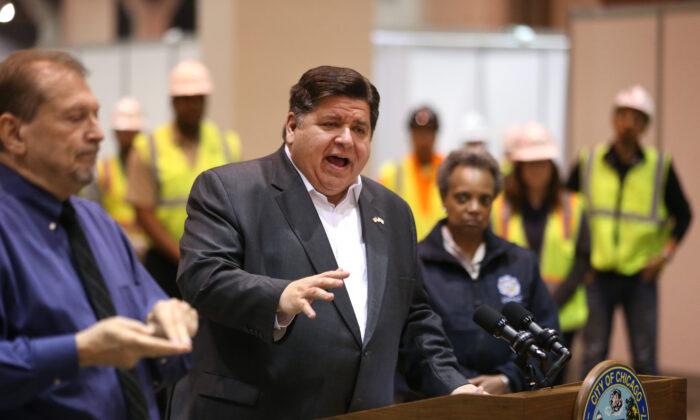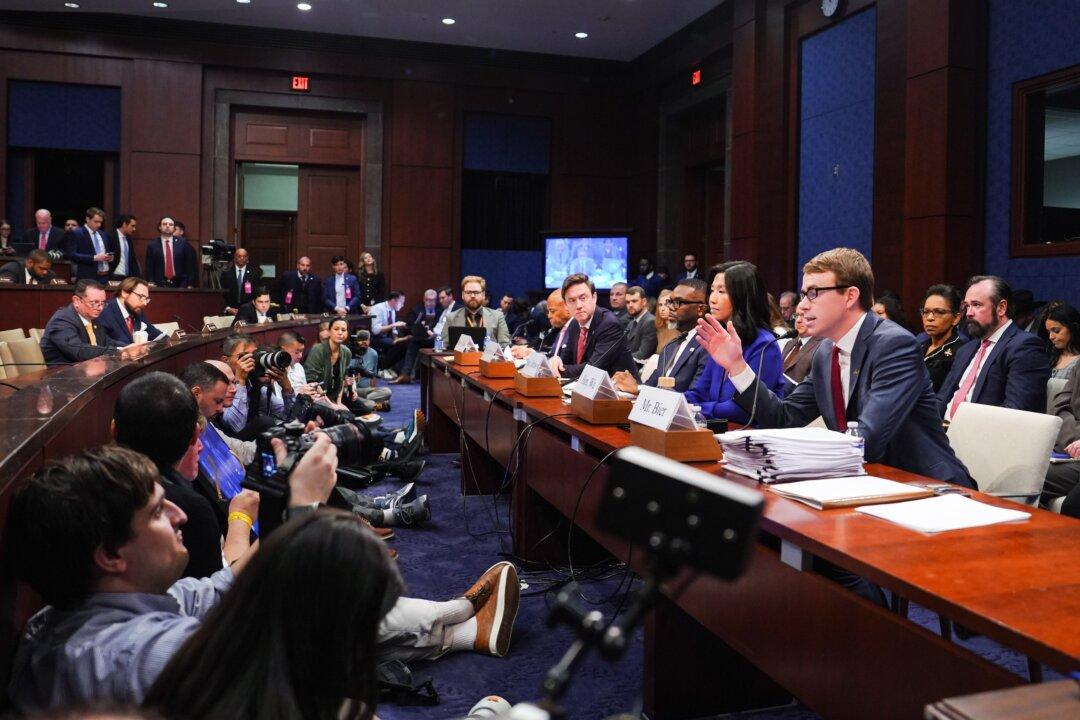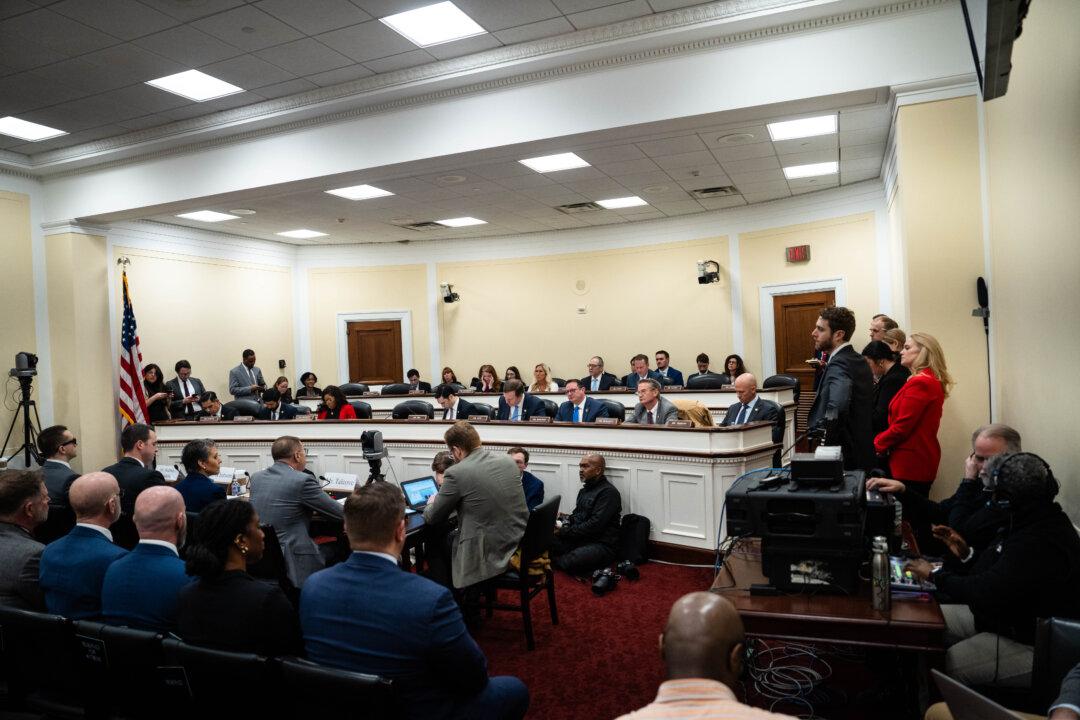News Analysis
When Illinois legislators approved a $42.8 billion budget for the coming year during an emergency session over the Memorial Day weekend, official revenue projections were only for $36.8 billion.
Lawmakers weren’t worried about the resulting deficit, however, because they assumed the state would borrow at least $5 billion to close the revenue gap.
So they
also voted themselves a tidy $1,800 pay raise on top of the $1,900 hike they gave themselves in 2019; state employees also got $261 million in scheduled pay raises.
A few weeks earlier, state Senate President Don Harmon told the state’s congressional delegation that Illinois needed $42 billion in federal bailout funds, only
$2.6 billion of which was attributable to unforeseen public health costs associated with the
CCP virus, commonly known as novel coronavirus.
The biggest single chunk of the requested bailout was the
$15 billion that Harmon said was needed “to stabilize the state budget.” Harmon’s Democratic colleagues outnumber Republicans, 40–19. Illinois Gov. J.B. Pritzker is a Democrat, and Democrats control the state House of Representatives, 74–44.
Illinois isn’t unique in demanding billions of bailout dollars from federal taxpayers. California’s Democratic Gov. Gavin Newsom, pointing to a $54 billion budget deficit, is demanding a federal bailout, while New York’s Democratic Gov. Andrew Cuomo, seeks nearly $62 billion.
Speaker of the House Nancy Pelosi (D-Calif.) was happy to oblige the bailout demands by including
nearly $1 trillion in such funds in her $3 trillion Health and Economic Recovery Omnibus Emergency Solutions (HEROES) Act, which was
narrowly passed by her chamber by a 208–199 vote on May 15.
Between them, California, Illinois, and New York stand to receive more than $104 billion from federal taxpayers if Pelosi’s bill is approved as is by the Senate and signed into law by President Donald Trump.
But Trump opposes federal bailouts for poorly managed states, telling the
New York Post recently, “You look at Illinois, you look at New York, look at California, you know, those three, there’s tremendous debt there, and many others.”
Trump praised Florida, Texas, and “the Midwest” for having “very little debt,” adding, “I don’t think the Republicans want to be in a position where they bail out states that are, that have been mismanaged over a long period of time.”
The bailouts are necessary, top officials in all three states say, because of the CCP virus pandemic that prompted the nationwide lockdown beginning March 15. State health care and unemployment benefits costs have skyrocketed, while tax revenues plummeted.
One-Party Rule
But an in-depth look at state and federal data shows there are at least five other factors in the deep-blue trio’s budget woes than the CCP virus’s impact.The first factor is these states is have long been one-party
“trifectas” for Democrats. Besides California’s Newsom, the California Senate has a 29–11 Democratic majority and the state Assembly is dominated by Democrats, 62–18.
It’s been nine years since California’s last Republican governor, Arnold Schwarzenegger, left office. And the last time Republicans controlled at least one legislative chamber was 1994, when the GOP had a one-vote state Senate majority.
Similarly, New York’s last Republican governor, George Pataki, left office in 2006. Republicans have controlled the state Senate four sessions since 2008, but only by razor-thin margins and in two of those sessions only through coalitions with minority parties. Democrats have dominated the state assembly every session since 1994.
Ditto for Illinois, home of Chicago and its infamous Daley Machine. The last GOP governor was Bruce Rauner, who lost a 2018 reelection bid. Democrats have controlled the statehouse every session since 1996, while the state Senate has had Democratic majorities every session since 2002.
One-party rule encourages budgetary sleights-of-hand. Sheila Weinberg, president of Chicago-based Truth in Accounting (TIA) told The Epoch Times on May 26 that Illinois officials rely on “special funds” to hide actual spending.
“They only have six budgeted funds, but 600 actually exist,” Weinberg said. “For example, on everybody’s phone bill, there is a ‘911 Illinois Enhancement Fee,’ which is supposed to be for 911 enhancement. But if they are short in the general fund, they just steal the money from that special fund.”
Highly Unionized
The second factor is that all three states’ public employee workforces are highly unionized, led by New York (65.5 percent), California (52.6 percent), and Illinois (45.8 percent), according to TIA’s
Data-Z, which allows comparisons of all 50 states on hundreds of factors, based on official statistics.
“Correlation is not causation,” TIA Director of Research Bill Bergman told The Epoch Times. “But in general, looking across the 50 states, indicators suggest that special interest groups that are stronger in one state than another tend to be associated with poorer financial conditions.”
Salaries
The decades-long strangleholds on public policy of Democratic majorities and strong public-sector unions are associated with the third, fourth, and fifth common results in the three states, according to Bergman, including overly generous state employee salaries, lavish but severely underfunded pensions, and failing financial ratings and business climates.In California, more than 340,000 public employees and retirees are paid $100,000 or more annually, according to Adam Andrzejewski, founder and president of
openthebooks.com.Among examples Andrzejewski found was a state university nurse being paid $501,391 per year, a correctional system psychiatrist receiving $409,399 annually, and the state’s chief barbering and cosmetology regular taking home $124,296.
It’s the same in Illinois, where 110,000 public employees and retirees get $100,000 or more every year.
“We found tree trimmers in Chicago making $106,663; nurses at state corrections earning up to $277,100; junior college presidents making $491,095; university doctors earning up to $2 million; and 111 small town managers who out-earned every governor of the 50 states ($202,000),” Andrzejewski wrote in an
April 27 report.
As for New York, Andrzejewski’s auditors
found more than 290,000 public employees receiving $100,000 or more, including “plumbers in New York City making $285,000 per year; police officers at the Port Authority of New York-New Jersey earning $423,467; Long Island school superintendents making up to $547,049; and a 93-year-old college professor retired on a $561,754 pension.”
Such profligacy contrasts with the three states’ median household incomes: $70,489 in California, $70,145 in Illinois, and $67,274 in New York, according to TIA’s Data-Z.
Financial Condition and Pensions
The most recent edition of TIA’s
Financial Condition of the States highlights the fourth factor, the sorry overall financial conditions of the three states.
- New York has $120.6 billion in unfunded pension and health care liabilities and ranks 42nd of the 50 states for overall financial health.
- Illinois has $200.3 billion in unfunded pension and health care liabilities and is 49th for financial health.
- California has more than $220 million in unfunded pension and health care liabilities, putting it 43rd for financial health.
Finally, California, Illinois, and New York show poorly in multiple independent rankings, based on factors such as how hospitable they are to small business, which creates most new jobs in America and generates new tax revenues.
California (49) and New York (47) show poorly in the
Small Business Policy Index compiled by the Small Business & Entrepreneurs Council (SBE), according to Data-Z. Illinois fares only a little better, ranking 35th.
In the
Tax Foundation’s annual rating of the favorability for business of each state’s tax policies, New York (49), California (48), and Illinois (35) are again in the bottom tier.
In
Chief Executive Magazine’s annual rating of business climates, California (50), New York (49), and Illinois (48) literally bring up the rear among the 50 states.





